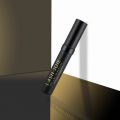Deciphering the Cost of Excellence: A Guide to Product Photography Pricing

Product photography is an indispensable component of any successful marketing strategy, but how much should you budget for it? Understanding product photography pricing can be a challenging task, as it varies depending on several factors. In this article, we will explore the key elements that influence product photography pricing and help you make informed decisions for your business.
1. Complexity of the Project:
The complexity of your product photography project is a significant factor in determining the cost. Simple, straightforward shots of products against a plain background will generally be less expensive than more complex shots that involve intricate setups, special effects, or elaborate staging. High-end products may require more attention to detail and creative styling, which can also impact pricing.
2. Number of Products:
The number of products you need to photograph will directly affect the pricing. Photographers often offer tiered pricing based on the quantity of products. Larger volumes may come with a discounted rate per product, while smaller batches may have a higher per-product cost. Batch shooting can also be more efficient for the photographer, resulting in cost savings.
3. Quality and Resolution:
The level of quality and resolution you require for your product images is another key determinant of pricing. High-resolution images suitable for large print publications or billboards will typically cost more than images intended solely for web use. Discuss your specific needs with your photographer to ensure you are getting the appropriate quality for your intended use.
4. Styling and Props:
If your project requires intricate styling, props, or specific settings to enhance the product's visual appeal, this will add to the overall cost. Professional stylists and additional props can elevate the quality of your product images but come with an additional price tag.
5. Location and Studio:
The choice of location for the shoot can affect pricing. In-studio photography tends to be more cost-effective compared to on-location shoots, which may require additional equipment and logistical considerations. The studio's size and facilities can also influence pricing.
6. Post-Processing and Editing:
Post-processing and editing are essential for ensuring that your product images are flawless. This includes tasks such as color correction, retouching, and background removal. The complexity of these editing tasks can vary greatly, impacting the final cost. Discuss the extent of post-processing required with your photographer to get a clear idea of the associated costs.
7. Licensing and Usage Rights:
The licensing and usage rights for your product images can affect pricing. Some photographers may charge more for exclusive rights to the images, while others may offer a more limited usage license. It's essential to clarify the usage rights with your photographer to avoid any legal complications down the line.
8. Experience and Reputation of the Photographer:
Experienced and reputable photographers often charge higher rates. However, their expertise can be worth the investment, as it typically results in higher-quality images and a more efficient workflow. While it may be tempting to opt for a lower-cost photographer, consider the long-term value of working with a professional.
Conclusion:
Understanding the intricacies of product photography pricing is crucial for budgeting and making informed decisions for your business. Factors such as project complexity, the number of products, image quality, styling, and post-processing all play a role in determining the cost. By discussing your specific needs with a professional photographer, you can arrive at a pricing structure that aligns with your budget and vision.
Other articles and publications:
- +1 (770) 690-9389
- 760 Vinca Ct, Alpharetta, GA 30005, USA
- www.etherartsus.com/





